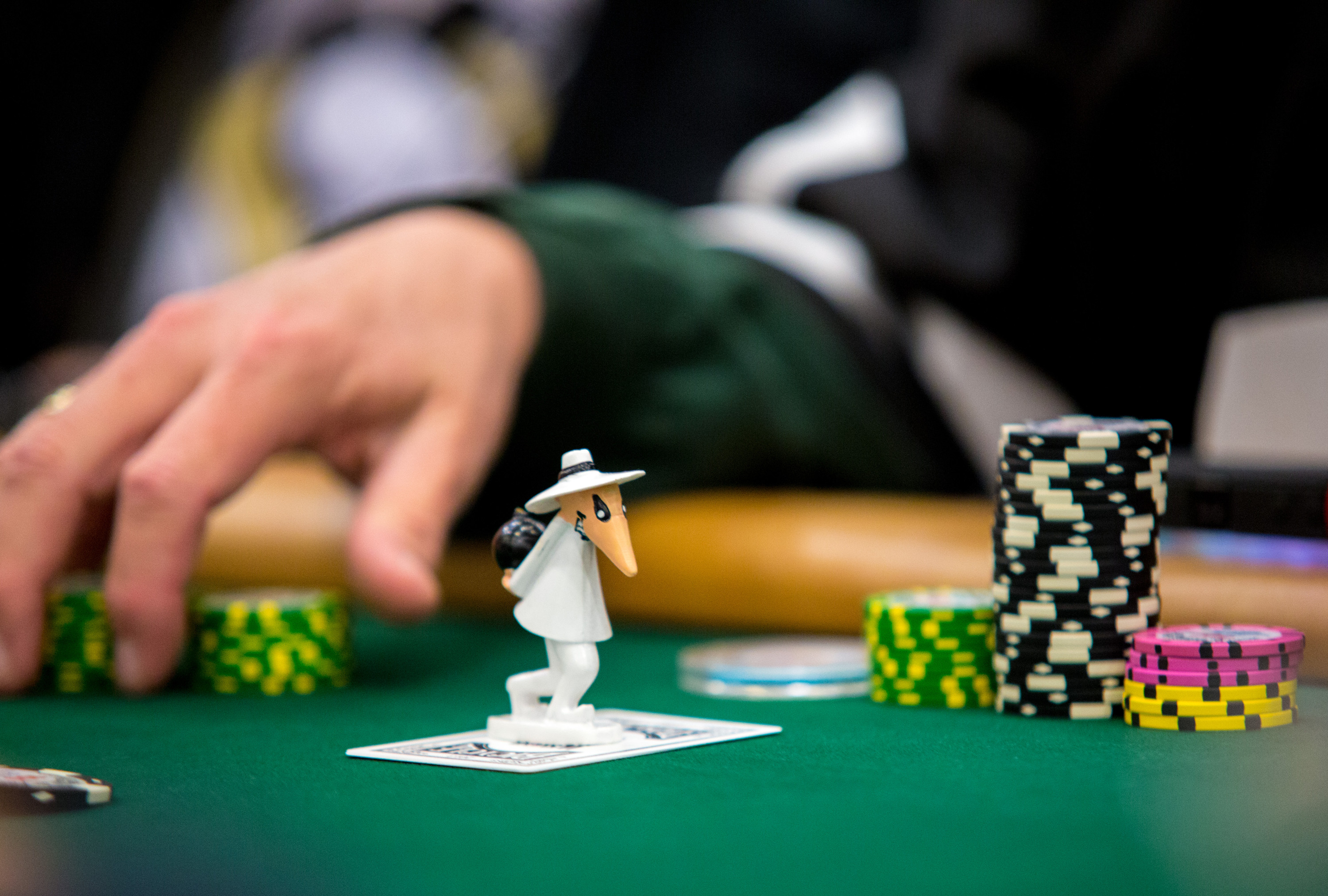Texas Holdem Limit Poker
Many low-stakes Texas hold ’em games are also played with spread limits which means that any player has the option of betting or raising an amount that is not fixed. For instance, in a typical $1-$4-$8 spread-limit hold ’em game, there will be either two $1 blinds or one $2 blind. Lynn Gilmartin explains the basics and essentials to understanding Limit Texas Hold 'Em. Latest Poker News at. Limit was THE way to play Hold’em until the poker boom took off in the early to mid 2000s. Even until 2005, Limit Hold’em (abbreviated as LHE) was the cash game of choice because bad players don’t lose quickly and the game is lightning fast with big pots brewing. Limit poker is a variation of the popular card game where the betting limit is set. This can apply to cash games as well as tournaments but the most popular option is Limit Texas Hold'em ring games.
Fundamentals of Poker - Limit Texas Hold'emMason MalmuthTwo Plus Two Magazine, Vol. 8, No. 12- General Guidelines
- Seven Card Stud
- Limit Texas Hold'em
Limit Texas hold ’em is deceptive. It appears easy to play, yet beneath that simple facade lies a game of extraordinary complexity. Many variables must be considered when making decisions, and figuring out the correct play is often difficult. So before we discuss specific hands and how they generally should be played, here are some tips that will help you determine the best course of action.
Know what the best possible hand is and how likely it is to be out.
With certain upcards, the potential for many different strong hands increases. With other upcards, however, the number of combinations is dramatically reduced. For example, if the board is the
no one can have a straight, a flush, or a full house. The best possible hand is three kings.
Whether someone is holding the best possible hand, which in the poker vernacular is referred to as “the nuts,” frequently can be determined by the number of players in the pot and the previous action. The more players there are and the more betting and raising that have taken place, the more likely it is that one of your opponents has the nuts.
Recognize when you hold the best possible hand.
Although this tip is actually a continuation of the one just given, its importance is such that it rates a separate listing. If you have the nuts and fail to recognize it, you will miss betting and raising opportunities which in turn will cost you money. And thinking you have the best possible hand when you don’t can be even more expensive. However, by paying close attention to the board, you will avoid making these costly errors.
As an example, if the board is the
and you hold ace-king, you can’t be beat. You therefore should get as much money as possible into the pot. But if the board shows the 3[diamond] instead of the 3[spade], you can lose to a flush and should proceed with caution.
Position is significant.
Texas hold ’em is known as a fixed-position game as opposed to a random-position game. In other words, the order in which the players act each round is predetermined, rather than determined by the strength of the exposed cards as it is in stud. We have already noted the advantage of acting last in poker. This means that you should be more selective of the hands you play in early position than of those you play in late position.
Don’t overrate suited hands.
Having two cards of the same suit definitely makes your hand better, but many beginning players tend to overrate the value of suited cards. In short, a hand like ten-six almost always should be thrown away, whether it’s suited or not.
High cards are much better than low cards.
It’s just as easy to make a pair when you have high cards as it is when you have low cards. If you hold the
your opponent has the
and both of you flop a pair, you have the better hand. Thus, you would prefer to have your hand made up of big cards.
Poker Strategy and Other Topics - November 2019
by Carlos Welch
by Robert Samuels
by Kevin Haney
by Kevin Haney
by Ben Saxton
by Bryan Clark
by Felipe Garcia, CFA and Aaron Byrd, CFA
by Nick Willett
by Mason Malmuth
Texas Hold'em is the most widely played poker variation in the world, particularly thanks to its simple setup and play.
This article explains all the rules and concepts you'll need to get started playing it.

Hold'em is almost exclusively played with three different betting structures:
- Limit
- No-Limit
- Pot Limit

This article focuses on the Limit version of the game. Its full name is 'Fixed Limit,' and it's called that because the betting limits are fixed. At any given time you can only bet in the single governing limit set for that street.
The simplest way to explain how the game works is to run you through a sample hand.
How to Play Limit Holdem
The very first thing you have to do is decide on the stakes in which you're about to play. If you're playing a tournament the stakes will start very small and gradually increase; if you're playing a cash game, the stakes will stay constant.
For this example, let's say you're playing a $2/$4 cash game. This means that in this game the lower fixed limit is $2 while the higher fixed limit is $4.
Hold'em poker functions with a rotating dealer. This means regardless of who's actually dealing the cards, the dealer in the game is the player with the plastic 'Dealer' button in front of them.
After the hand concludes the dealer button is moved to the player to the left of the current dealer, and so on.
If this is the very first hand you can choose who starts as the dealer in any fashion you would like. The most common way is to deal every player one card face up. The high card starts as the dealer.
Putting Out the Blinds
Once you have a dealer the player to the left of the dealer must put the small blind out. The small blind is a forced bet equal to half of the smaller limit.
In our $2/$4 game the small blind would put out $1. (If you're playing a limit in which half would not be an even-dollar amount, such as $5/$10, the small blind is typically rounded down, making it $2.)
The player to the left of the small blind must place the big blind. The big blind is equal to the full amount of the smaller limit; in our example here the big blind will be $2.
Limit Hold'em - The Deal
The cards are dealt clockwise, starting with the player to the left of the button (the small blind) and ending with the player who is acting as dealer (the button).
Each player receives two hole cards, which for now remain face down on the table.
The First Round of Betting
After the last card is dealt the action starts with the player seated to the left of the big blind. This player has the option to call (match the amount of the big blind, or the smaller limit), fold (throw away their cards) or raise.
A raise in limit poker is always equal to the total of the previous bet, plus the addition of the current governing limit.
In this scenario, the player chooses to raise. This means they put in a total of $4 ($2 to call the current bet of the big blind and $2 to raise the amount of the smaller limit).
The action now continues clockwise around the table with each player acting on the same options: call, fold or raise.
When the action meets the small blind the amount of money they've already put into the pot is counted toward the total of their call or raise.
No Limit Texas Holdem Poker Free Download

If they choose to fold, that money is lost to the pot.
The big blind has the same option as the small blind here. If no player would have raised, the big blind would have been the only player with a different set of options.
Since (assuming no raise was made) the current bet was $2, which the big blind had already bet before the deal, they had the option to check (continue to the next street without putting any more chips into play) or to raise.
In poker, a betting round ends when every player has had the option to play, and every player has the same amount of chips bet (or has folded).
(Note: There is an additional rule on raising. In Limit Hold'em there is a 'cap,' meaning there can only be one bet and three raises in any single betting round [unless there are only two players remaining in the hand]. This means once there has been a bet and three raises, no player is allowed to raise any further; they can only call or fold.)
Related Reading:
The Flop
Once the first round of betting is complete the dealer deals the flop. To do so, they place one card face down on the table (this card is known as the 'burn card'), followed by three cards face up. Each player looks at the flop and uses it to evaluate the strength of their current holdings.
From now until the end of the hand, every betting round starts with the player closest to the dealer button. This means action starts in the small blind and moves clockwise around the table.
If there is no live player in the small blind, action starts on the next player still in the hand, following the clockwise flow around the table.
The betting in this second betting round is identical to that in the first, with one small exception. The first player to act now has the choice to check (there is no bet, so calling no bet is called 'checking') or to bet (they can bet the lower limit of $2). If they check, the next player is faced with the very same options.
As soon as someone bets, the players' available options become to call, raise or fold. As soon as everyone has acted and everyone has the same amount of money bet, the betting round is over.
No Limit Poker Texas Holdem
Related Reading:
The Turn and River
Dealing the turn is similar to the flop, as the dealer deals one card face down, followed by one card face up. This card is followed by the third betting round.
The turn and river play the very same as did the flop, with only one difference. The betting limit on the final two betting rounds uses the higher limit, making each bet and raise cost $4.
Once the third betting round is completed the river is dealt exactly as the turn was. After the river is dealt the fourth, and final, betting round is run. Upon completion of this betting round, the remaining players in the hand enter the showdown.
The showdown is simple - each player shows their hand, and the best hand wins the pot.